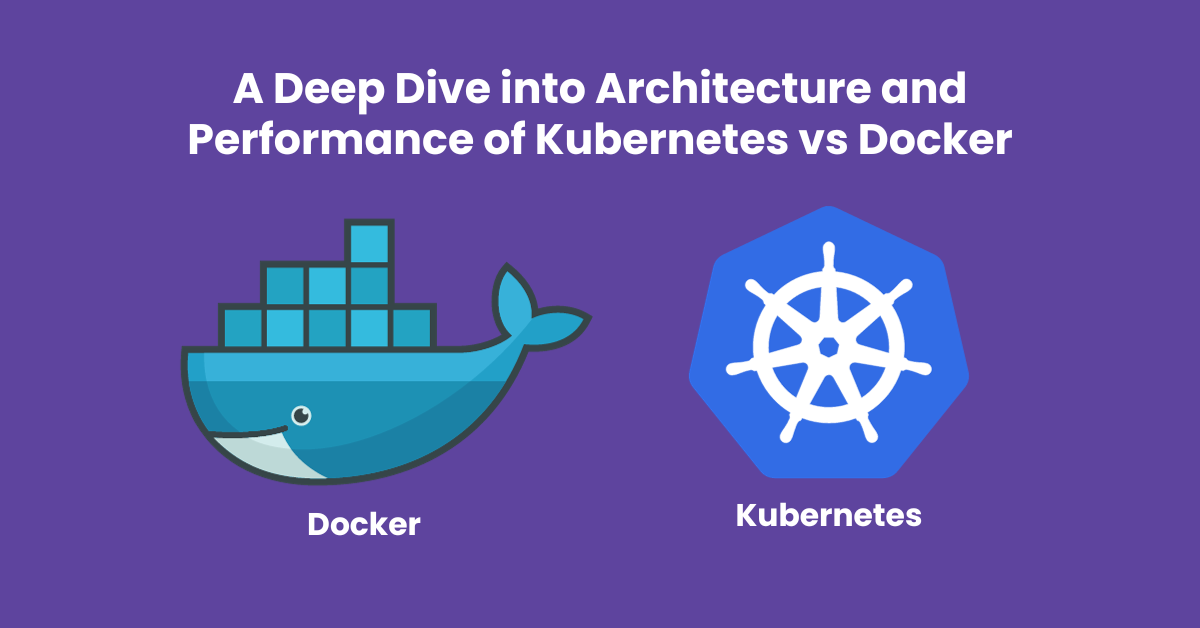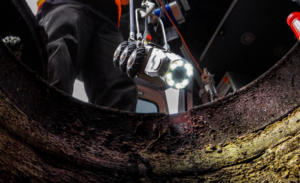
Two pillars have emerged as the foundation of container orchestration in DevOps, where scalability and efficiency are critical: Kubernetes and Docker. Any enterprise aiming for smooth deployment and administration of containerised apps must comprehend the nuances of their architecture and performance. In this blog, we will examine the architecture in the context of Kubernetes vs Docker, analysing the subtle differences in performance and illuminating the crucial decisions that DevOps teams must make.
Unravelling DevOps Dynamics
DevOps, the fusion of development and operations, has completely transformed the software development lifecycle. To automate the delivery of software and infrastructure modifications, it strongly emphasises cooperation and communication between IT specialists and software developers. As more companies adopt DevOps techniques to optimise their processes, containerisation platforms such as Kubernetes and Docker are coming under more scrutiny.
Decoding the Docker Difference
A program and its dependencies are contained in a standardised unit called a container, which was established by Docker, the forerunner in containerisation. This small, lightweight, self-contained device transformed application deployment. Docker was unable to properly handle the difficulty of orchestrating these containers. It was this gap that made room for Kubernetes.
Kubernetes: Orchestrating Complexity
Kubernetes, also known as K8s, came to the fore to handle the orchestration complexities that Docker encountered. Its architecture enables automating containerised application deployment, scaling, and administration. The idea of clusters, which are made up of a master node and worker nodes, is the foundation of Kubernetes. Worker nodes carry out the tasks, while the master node manages the orchestration.
Mastering Kubernetes Components
To fully appreciate Kubernetes’ power, one has to examine its core elements:
Master Node
- Kube-ApiServer: All API requests go via this server.
- etcd: A highly available and consistent key-value store for all cluster data.
- Kube-Scheduler: Distributes work across worker nodes following resource availability.
Worker Nodes
- Kubelet: Verifies that containers are operating inside Pods.
- Kube-Proxy: Upholds network regulations for communication between pods.
By using these components, Kubernetes orchestrates the deployment of containers, guaranteeing a dependable and expandable system.
Docker Swarm: A Brief Encounter
Docker Swarm is worth discussing before we go into the Kubernetes domain. For smaller-scale applications, Docker’s native orchestration solution, Swarm, offers a more straightforward option. Docker Swarm is still a good option for individuals looking for a simple and fast orchestration solution, even if it doesn’t have the same extensive feature set as Kubernetes.
Performance Showdown: Kubernetes vs Docker
The key point is to compare Docker and Kubernetes’ respective performance. Each excels in different areas; thus, which one to choose depends on the particular needs of a given project.
Scalability: Kubernetes Takes the Lead
Kubernetes is the clear winner when it comes to scalability. Thanks to its design, applications may be scaled smoothly by adding or deleting worker nodes. Large-scale, enterprise-level installations choose Kubernetes due to its built-in flexibility and robustness.
Ease of Use: Docker’s User-Friendly Approach
Conversely, Docker takes great satisfaction in its simplicity and user-friendliness. Docker can be a simpler option for projects that are smaller in scope or have fewer complicated deployment requirements. Its straightforward approach to containerisation appeals to developers who don’t require complex orchestration capabilities and are looking for a fast and effective solution.
Navigating the DevOps Landscape
The decision between Kubernetes and Docker in the complicated DevOps landscape depends on the project’s size, complexity, and performance needs. Docker is still the champion of simplicity, but Kubernetes steps up to meet the needs of enterprise-level applications, making it the heavyweight winner.
Strategic Considerations for Deployment
The strategic deployment considerations are crucial in the complex tango between Kubernetes and Docker. DevOps teams need to assess these containerisation solutions’ technical features and match them with more general organisational objectives. This decision-making process should be guided by elements like the team’s experience, existing infrastructure, and long-term scaling goals.
When deciding between Docker and Kubernetes, it’s critical to consider your team’s skill set. Teams with less expertise in complicated orchestration may find Docker helpful because of its approachable nature. Conversely, large-scale businesses seeking long-term scalability and reliability find Kubernetes important because of its rich feature set.
As the DevOps environment changes, adopting containerisation technologies becomes essential for effective application development and delivery. A seamless integration into the larger organisational environment is ensured by striking a balance between Kubernetes’s technical prowess and Docker’s user-friendly nature while also taking strategic concerns into account.
Conclusion
Between Kubernetes and Docker, there isn’t a single, universally applicable answer. DevOps professionals need to balance the advantages of orchestration vs simplicity, matching their decisions to the particular requirements of their projects. The symbiotic partnership of DevOps, Kubernetes, and Docker continues to be at the forefront of innovation, influencing the deployment of containerised applications as the landscape changes.





